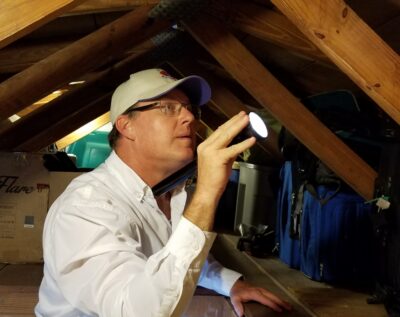
A Rat Problem in Your Home
No one can disagree that rats within a home pose significant threats.
Rats are nasty, dirty creatures that can carry diseases such as typhus, rat-bite fever, salmonella, or even bubonic plague. Because they’re so filthy, the rats can easily contaminate food or food preparation surfaces merely by passing by. They often gnaw their way into stored products in search of food, contaminating it along the way.
Rats often carry fleas, ticks, and mites that can pick up these diseases and spread them to their next hosts—you and your loved ones. ICK! And exposure to rat urine and feces also poses a health danger.
Rats can cause extensive property damage as they build nests and chew their way through wood, electrical wires, drywall and more.
Rats can cause a lot of expensive property damage as they chew through building materials such as wood and drywall. They have even been known to cause electrical fires when they chew through wiring or dislodge it as they build their nests.
Heath Pest Control provides quick and expert response when you suspect rats have invaded your home. We can work with you to create a solid, year-round plan of protection and prevention through our services.
Let’s take a look at what you can be facing with rats in your home.

What are the signs of a rat infestation?
- Scratching, scurrying or squeaking noises, often heard at night when rats are most active
- Dark, greasy rub marks along the rafters in your attic
- Gnaw marks on wood, drywall and even electrical wires.
- Your pet dog or cat stares fixedly at a seemingly blank spot on the wall, as they may be hearing or smelling a rat or other wild animal.
- A trail of dark brown banana-shaped feces (left by the roof rat, the most common in Florida)
Where Do Rats Live In Your House?
Rats can build a nest in your home inside walls or ductwork, inside garages or attic spaces or beneath a pier-and-beam foundation. These are the most common locations. They enter homes seeking food or water, so they might also be found in your pantry or your kitchen.
Don’t forget about laundry rooms or anyplace else where rats can access water, especially if they don’t have easy access to a water source outdoors.
What type of rat is that?
In Florida, we are dealing with basically three different types of rats: the roof rat, Norway rat, and the Wood rat.
Here is what all three types have in common. They run along the same paths and routes as they travel back and forth between their nests and food or water sources. All of these rats have naturally oily fur that leaves greasy marks along the walls or beams that they regularly travel along. And, of course, all rats leave urine and droppings around the areas where they build nests. One interesting fact about rats is that their front teeth are constantly growing meaning lots of regular gnawing is required to keep them filed down.
If that does sound creepy—and dangerous—then their rate of reproduction will drive home the fact that once they gain access to your home you will quickly have a big problem if it is not dealt with immediately. Many types of rats are very prolific, some are capable of producing as many as 40 babies in a year.
The Roof Rat
The most common type of rat found in south Florida is the roof rat, which is also called palm rats, fruit rats, citrus rats, and black Rats. They will eat almost anything that is available, but mainly vegetation
Roof rats are black or dark brown with long tails, big ears, and big eyes. Their fur is smooth and they are typically three to eight inches long.
Female Roof Rats can produce as many as 20 offspring within a year, and they tend to live between two to three years, which is why you’ll want to get rid of them as soon as you identify them. They are often seen up near the roof and like to net in places like your attic, in the walls and crawlspaces.
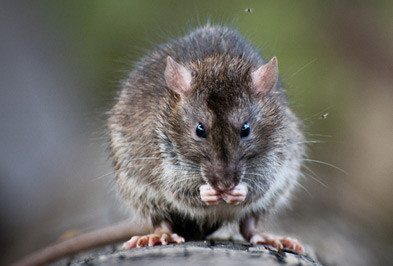
The Norway Rat
Norway rats are most often found outside, although they will venture indoors in search of food. They are omnivores and will feed on everything from meat to fruits to grains. Unlike roof rats, Norway rats are burrowing rats, which means they are often found in basement spaces and crawl spaces. They will usually hide during the day. Norway rats often damage sidewalks, patios, and foundations, while roof rats traditionally damage walls, pipes, wires, and insulation.
Norway rats can reach lengths of up to 16 inches. Their fur is usually shaggy and brown or grey in color. Their tails are shorter than their bodies, and they are usually covered in scales—as are their ears. It’s usually easy to tell them apart from roof rats, especially by the shape of their droppings, which are not only capsule-shaped, but also much larger than those of roof rats.
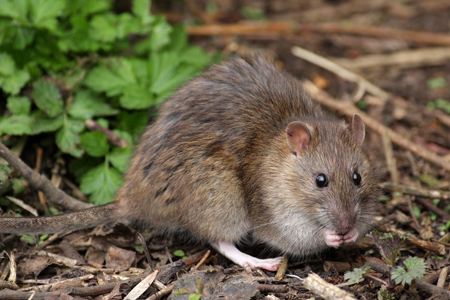
The Wood Rat
Wood rats aren’t as common as roof rats or Norway rats, but they are mostly found in northern parts of Florida. They can be a real nuisance due to the fact that they not only eat food and leave droppings around the house, but also steal small items, which is why they are often called “Pack Rats.”
Wood rats grow up to seven inches in length and are roughly the same size as Norway rats. However, you can tell them apart from Norway rats because of their hamster-like look—they have long, soft, fine fur and furry tails instead of scaly tails. They range from black or grey to brown in color.
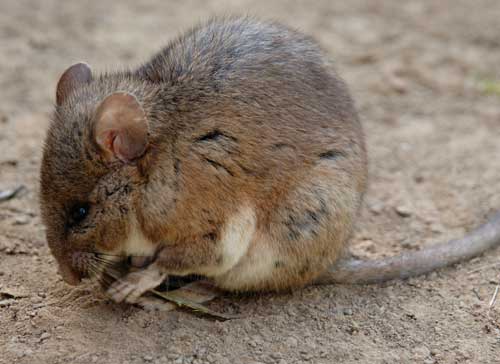
What you can do
- First and foremost, cut off the rats’ access to your home, attic, and garage.
- The next step is cutting off their access to food and water sources.
- Repair holes in window and door screens
- Seal holes and cracks with caulk
- Install door sweeps on exterior doors
- Trim trees and shrubs away from the side of the building
- Keep food in airtight containers, including pet food
- Store firewood away from homes and businesses
- This is why it’s smart to keep food in airtight containers rather than sitting open on counters or shelves.
- Eliminate moisture sites such as leaky pipes, especially in attics and crawl spaces
- Keep bird feeders well away from your home and garage, as rats often enjoy eating the food
- Find and close any gaps or holes in the eaves or other areas that provide a means of entry.
What we can do for you
First, we can take steps to eliminate the rats that are present. When you only have a couple of rats occasionally visiting, then setting out traps may solve the problem. Trapping rats can involve using either traditional snap traps or humane traps, both of which use bait to lure the rat into the trap.
Traps and poison alone will not effectively deal with the problem of a full rat infestation. In these cases, we must identify even the smallest gaps that are providing access and remove access to all food and water.
Our expertise is in quickly identifying the problem and planning the strategy that will remove the rats as quickly and safely as possible while cutting off their ability to come and go as they please. Then we can address other preventative measures that will help prevent their return.
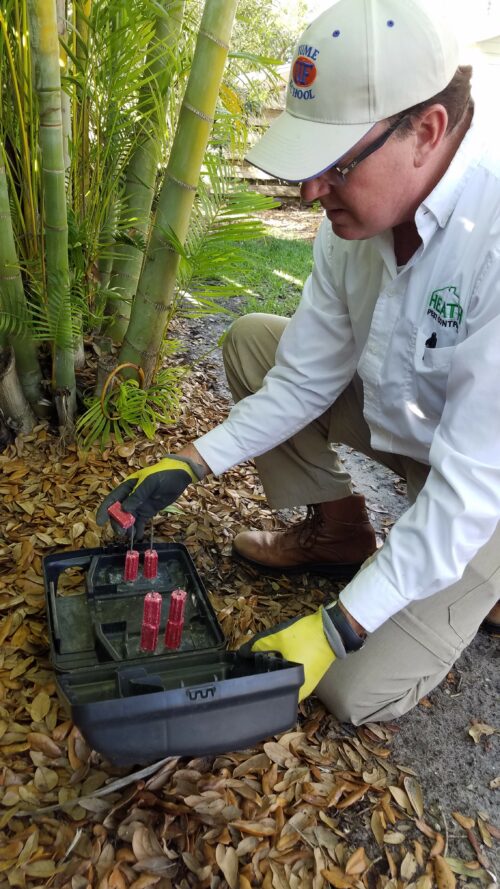
TESTIMONIALS
“Unfortunately we had fleas all over our new house, brought in by a dog we babysat. I immediately called Heath Pest Control (who was already my pest guy) to schedule an emergency appointment, to which he clearly explained to me my options with his company, but also my options of trying to deal with it myself. And through his guidance and information, I was able to rid my house of fleas on my own. It was very refreshing to have someone who was honest just trying to help me, instead of just trying to make money off of me. I will always use Heath Pest Control, And will always recommend them to my friends and family.” (Amanda Robinson)
